- Home
- Edgar Allan Poe
The Raven (Penguin) Page 2
The Raven (Penguin) Read online
Page 2
Poe grappled with the darker side of mankind, with the demons that reside within us: our mind, a crumbling edifice, sinking slowly in a swamp of decadence and madness. He knew that a rational, good-hearted man could, when ridden by demons, sink a knife in the eye of a beloved cat and gouge it out. He could strangle an old man or burn alive his enemies. He knew that those dark impulses can shape us, overtake us, make us snap—and yet, we would still be able to function, we would still presume to possess the power of rational thought.
Why would anyone say we are mad?
In Poe, the legend weighs heavily upon his readers. Partly because of the singular misfortune of his life, but also due to one outstanding fact: The portrait of Poe as a dissolute, intoxicated wretch comes chiefly from the biased chronicling and ruthless eulogizing of one Rufus Wilmot Griswold. Griswold had the singular duty of being an enemy of Poe and guardian of the writer’s legacy. So, quite early after the writer’s death, the misinterpretation of Poe starts in earnest. Griswold publishes a most ruthless epitaph and a distorted biography that will, to this day, define Poe in the popular imagination.
One of the most surprising aspects of Poe is how remarkably uninterested he is in the supernatural. He is interested in figures of uncanny origin, and—much like the medieval artists—is capable of giving the plague a body and a voice, but he is not compelled toward the ghostly or physically monstrous; he is a rationalist (it should come as no surprise that he pioneered the detective novel) repulsed and attracted by madness and loss.
Like every good writer of horror fiction, there is a large degree of autobiography in Poe’s work. The imprinting of death and love, the almost Dickensian nature of his childhood and the fact that his savage muse did not endear him to the mainstream of American literature all cooperated to create the sense of isolation in his fiction. This remarkable characteristic—which he will share with another accursed American writer, Howard Phillips Lovecraft—is of the foremost importance in understanding Poe. Most of his protagonists are outsiders. They stand alone, trapped, confined within themselves.
But it is here that two thoroughly modern demons make their appearance: perversity and arrogance. Part of the fundament of the horror tale is that it exists in a regimented social reality. The inner monologue of a Poe character becomes more effective when juxtaposed against minute social detail and quaint norm. The desires that pulse within are deemed irrational or perverse by the outside world and lay these characters on a disastrous route that suffuses each story and poem with a driving sense of doom.
His poems and stories, such as those in The Raven: Tales and Poems, have a passion for the abnormal and the hopeless that makes clear his ambivalence toward “normalcy.” He can only paint normalcy as a saintly virtue, a quiet, enraging sounding board for the drumming of madness. And little by little, as his tales unfold, that quaintness will become unsustainable, repugnant even, and it must be extinguished. It is in this arrogance that Poe’s characters reveal their true nature: They are not victims but executioners. Wolves in a land of sheep. In this, Poe hints at the psychopathy and sociopathy that will shape the criminology of centuries to come. Standing above moral judgment, he gives us a true glimpse into the criminal mind.
Poe is enraptured by the loss of all that was noble and grand and good. The tragedy in Poe’s world is not the darkness in which we wallow but the fact that we once contemplated heaven. The warm, bright kingdom of the smile has fallen, and it has given way to a valley of despair and demented laughter.
Poe instilled polarized reactions and remains, to this day, a writer often misinterpreted and even reviled. To an obstinate few, the exquisite, precise nature of his prose remains invisible, asphyxiated by the effect it provokes. But his work is without a doubt the fundamental stepping-stone between the legacy of Gothic horror and the threshold of its modern incarnations.
Poe redefines the Gothic edifice as a haunted castle of the mind, but it will have to wait until the end of the nineteenth century to be fully inhabited, when Henry James creates The Turn of the Screw.
The ghost story is perhaps the most venerable and accepted part of horror literature. Just as monsters can be found as far back as Beowulf, The Ramayana, or The Iliad, so can ghosts be traced to the very origins of the consigned narrative.
The ghost story has had many great practitioners, but, justly, two names stand above them all: M. R. James and Joseph Sheridan Le Fanu. In their hands, the ghost story acquires such solidity and conviction as to become fact. Their distinct styles achieve this result through varied means, which I will discuss succinctly. In James, horror comes as much by the punctilious nature of the detail and background provided for the story as it comes from the obstinate omission of such details in a capricious manner by the story’s narrator. This lends the story the patina of truth. It is no secret that, in describing his horrors, James is evoking his own intimate phobias and, it is said, the echoes of a single ghostly encounter he had at a very early age.
Le Fanu’s case is entirely another matter. Even when James drinks from the same stylistic resources—which he absorbed as a student and scholar of Le Fanu’s legacy—it is the innate connection that Le Fanu feels with the supernatural that dominates his work and separates it from the rest.
The tenuous but precise way in which Le Fanu builds up the supernatural elements is akin to the pervasive effects of mildew on a solid wall. It is not by force but by accumulation that he demolishes disbelief and tears down the barrier that separates us from fear. The relentless but delicate construction of atmosphere and dread that Le Fanu creates comes partly from a calculated and precise style of writing and partly from the lifelong relationship he has with the darkest folktales of his native country.
The tenets of ghost story fiction are quite varied but almost invariably require the rooting of a haunting within an edifice, a patch of land, or an ancient object. The ghost must be “tethered” to a host of some kind. A haunted castle.
Henry James was fascinated by ghost stories—which he defined as fairy tales for adults—and studied them carefully. He devoted considerable time to the creation and contemplation of such tales and, in my opinion, devised one of the most moving and tenuous of all ghost tales in “The Way It Came.”
In The Turn of the Screw, James utilizes many a traditional Gothic story element (a haunted edifice, a manuscript, a secret from the past, and the element of innocence at the center of the tale) but creates a breathtaking exercise in ambiguity and duality—the house and the mind of the governess seem to be equally infested with darkness and ghosts.
Through the ages, it has been a tradition in Great Britain to have a great ghost story for Christmas. This tradition gave us A Christmas Carol by Dickens, and it extends into the twentieth and twentieth-first centuries through the gorgeous productions the BBC has done through the decades at the yuletide season.
Henry James utilizes this device to start The Turn of the Screw. He also utilizes, obliquely, a most popular framing device: the club story.
The club story, along with the ghost story, is a cherished tradition that can be found in settings as varied as The Dinner Club stories by Sapper, Tales from the White Hart by Arthur C. Clarke, assorted stories by M. R. James, or even “The Body Snatcher” by Robert Louis Stevenson, to name but a few. In the typical club story, a varied assortment of characters gathers in a supper club, a tavern, or a smoking room and, after describing the settings—the quality of the brandy, the gentle glow of the fireplace—stories of one sort or another are shared. This device often produces in the reader a sense of comfort and allows for a colloquial narrative that gives the most outlandish tales the patina of reality. Often a manuscript is quoted. The epistolary nature of the tale within the tale also lends credence to the events narrated, even if they unfold through a most unreliable narrator. The reader may now be in the wrong hands.
James then proceeds to weave a brisk but dense tale that engages the heart and the mind of the reader. We are at once as fascinated by the c
hilling nature of the tale as we are by the bifurcating possibilities of the haunting. We are either seeing the chronicle of the most tragic, relentless mental abuse of two children, or we are witnessing a chilling story of spiritual infestation. James himself has left some scattered evidence as to where his loyalties lay, and while there is some indication of his belief in the reality of the haunting, this has been disputed ardently through decades of literary analysis by some of the great minds of our century.
At the heart of the tale lies a most English virtue: repression. Regardless of the factual reality of the proceedings, the constant pulse of repressed desire gives the characters a susceptibility, a proclivity to heightened emotion, to hysterical reaction. James maintains the children as chillingly ambiguous, manipulative, and strong willed. This alone would have unsettled a governess at the time, but particularly one who can only define her subjects in the most anodyne and antiseptic terms: “charming,” “beautiful,” “beatific,” or “radiant.” The governess seems uncomfortable at the hint of any complexity in the children and at great unease with almost any demonstration of flattery or physical affection. That is why James is so brilliant in constructing his two ghosts around the very thing that would frighten his main character: carnal desire.
The origins of Quint and Miss Jessup (the former governess) are not an Anglo-Saxon myth or an ancient tale of revenge but the carnal story of two lovers consumed by physical passion. It is, in a way, a different sort of possession that also scares and bewilders our heroine/villain, quite in the same way that native lust would shock goodwilled missionaries across the South Seas.
The duality in the tale lies also within James. The English streak in him supports one side of the story—the one permeated by ghost tales and moral colonialism. His empirical, liberal American streak supports the other side. And even structurally, the pacing of the piece—which can be defined as a long novella or a short novel—throughout its compact chapters is entirely American while its coruscated prose and internal pacing are decidedly Old World.
A sophisticated mind still has, hardwired in it, the trigger of pareidolia—the human tendency to organize any random pattern into a system or a shape—and James lays before us an inkblot test of a tale. Whether we believe the haunting to be real or not speaks volumes about our nature as well as the nature of the tale’s characters. Our experience reading the novella mirrors the experience of the governess trying to assemble the tale. After all, James said that the reader should rely on “his own experience, his own imagination” to complete the haunting.
The haunted castle is now officially our mind and the ghost is desire.
Which brings us to Howard Phillips Lovecraft. There is so much to say about him and such illuminating texts have been written by brilliant scholars (above all else my kind accomplice S. T. Joshi), colleagues (L. Sprague de Camp’s Lovecraft biography), or fellow authors (H. P. Lovecraft: Against the World, Against Life, Michel Houellebecq) that I feel at a disadvantage trying to scribble a few thoughts.
I will then speak about my personal relationship to his work. One hot summer afternoon (I must have been eleven or twelve years old) I stumbled upon the text of the Lovecraft story “The Outsider.” I was riding in the family car, and the text was included in Spanish in an anthology for my older brother’s lit class. I started to read, and almost an hour later, I was left behind in the car, still reading, oblivious to the inclement heat, mesmerized and moved by this story.
In it, an entity emerges from the depths of the earth and ascends painfully, seeking, lost. And he encounters a horrifying entity at the end of a corridor. A loathsome creature, pale and deformed—who is it? And why does he stand there, looking directly at him? What is that frame that surrounds the door where the wretch stands? In the final paragraphs of the story, the narrator extends his hand and the horror hits the reader full force. The story provoked such strong emotions in me. “The monster was I . . .” And, as I closed that book, I felt transmogrified. I had become an acolyte of Lovecraft.
Starting that afternoon, and for the rest of my life, I have devoted more time to Lovecraft than virtually any other author in the genre. His mannered, convulse prose, so antiquated and yet so full of new ideas, is very compelling to a young writer for the same reason that Bradbury’s is—it seems easy to forge. It is so clear, so full of evident quirks, that you long to imitate it, and it is then that you find out how full of secrets his prose can be.
Many a time the term “visionary” is used to describe a particular type of artist, one with such conviction about the worlds that he or she is building that he seems to be transcribing rather than creating. I wrote about this in my introduction to a Penguin Classics edition of Arthur Machen’s work. Well, Lovecraft is that type of artist. His phobias and inadequacies do dictate in him the compulsive worlds and characters he creates. He speaks of what he knows—corrupt lineages in old Eastern Seaboard towns, bizarre forms of sea life that terrorize the pious white men with their undulating, soft folds of pale flesh, the fundamental loneliness of men trapped out of time in urban monstrosities that seem to shift and change around them—all of these things stem from the dark moments in his own life.
Lovecraft’s biography rivals Poe’s in bizarre occurrences and outrageous misfortune, but his is a quiet, isolated, phobic existence, whereas Poe’s is marked by excess and adversity. The details of his misfortune are too many and too odd to enumerate here, and the best thing I can do is ask you to follow Mr. Joshi’s notations and books and the few other titles I recommended earlier.
The stories included in the Penguin Horror volume of The Thing on the Doorstep and Other Weird Stories are an absolute treasure trove that will show you many of the thematic and stylistic aspects of HPL’s work. He is a well-versed student of the weird tale and can metamorphose at will. He drinks from the wells of Poe, William Hope Hodgson, Algernon Blackwood, Lord Dunsany, Arthur Machen, and many others, but impresses all of his narratives with his own phobic, misanthropic seal. No one has ever created a more adverse and bizarre cosmos than Lovecraft. No one.
You’ll be delighted with the lysergic “The Music of Erich Zann,” the necrophiliac “The Tomb,” the often imitated, multianthologized “Pickman’s Model,” the disturbing “The Dunwich Horror” and a few other masterpieces, including the titular story.
But the crown jewel in the collection is, in my opinion, “At the Mountains of Madness.” A great admirer of Poe, Lovecraft sets out to riff on The Narrative of Arthur Gordon Pym of Nantucket, but then he stumbles into uncharted territory by hinting, through science and revelations, at the darkest possible origin of mankind. A group of scientists embarks on a fossil hunt to the frozen edges of the globe. Utilizing cutting-edge technology and tools, they attempt to catalog and decipher the evolutionary clues found in fossils and remains that are gradually revealed to them. They stumble upon the ruins of a cyclopean alien city. It is there that it is revealed that an ancient race of extraterrestrials created mankind as a cruel cosmic joke. They also created a race of slaves that can shape-shift at will, and that still lurk in the ruins of the city. The final encounter in the few final pages and lines of this story are so powerful, so primal as to render one speechless.
Reading this tale in my midteens was a revelation. I had never been exposed to any literature that so dwarfed our existence and hinted at the cold indifference of the cosmos. I became entirely enamored. Making a film of it became my quest.
For the last fifteen years or so, I have attempted repeatedly to make a film based on this story. From 2009 to 2011 I dedicated my every waking hour to sketching, sculpting, and writing about every detail in the adaptation of Lovecraft’s difficult prose. Difficult to adapt, that is, since it is a superb tonal work, chock-full of erudite and minute scientific annotations and peppered with brief but shocking episodes of devastating power. The adaptation took necessary liberties but remained faithful to every landmark of the novel.
Needless to say, the film didn’t happen, and for no
w I have to be content to share my home office with a life-size Lovecraft sculpture, many Cthulhu and HPL busts, a portrait by Michael Deas, hundreds of conceptual drawings, a visual effects test by Industrial Light and Magic, and the few eerie music tracks that Jónsi, from Sigur Rós, composed for us . . .
It is my hope to, one day, share my love for HPL with the world.
With The Haunting of Hill House, Shirley Jackson evolves the ghost story one step further by creating an equally fluid tale—one that will again test the relationship between the fantastic and the psychological.
Jackson is the perfect case of a writer associated with a genre that a substantial portion of her readers would avoid. Her prose and poise are obliquely reminiscent of E. B. White, Thurber, or the spirit of The New Yorker, and yet her fierce grasp of the supernatural, her lapses into the Gothic Romance tone and trappings, and her undeniable attraction to the bizarre would have her equally at home in Weird Tales. So, much like James, she injects her own ambiguity into the tale. But whereas James brings a fin-de-siècle sensibility to the stories, Jackson brings forth a decidedly modern and American approach.
One of the most remarkable feats Jackson pulls off is to make the house a character. It is not the melancholic edifice that hosts the lamia. It is the lamia. Stephen King would later define this notion further by postulating that bad places attract bad things, but Jackson provides the foundation by asserting over and over again the presence of the house as a sentient, physical, spiritual entity of evil.
As an extension of the loneliness prefigured in Poe, Jackson continually speaks of that condition in most of her fiction. Hill House can only hold the truly lonely souls, reclaim them, invite them to belong. The symbiosis, the abandon that is needed for the house to possess the novel’s heroine, Eleanor Vance, is a game changer—a tacit agreement that will be cashed in the final pages of Jackson’s masterwork: “[S]ilence lay steadily against the wood and stone of Hill House, and whatever walked there, walked alone.”

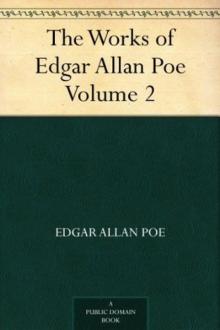 The Works of Edgar Allan Poe — Volume 2
The Works of Edgar Allan Poe — Volume 2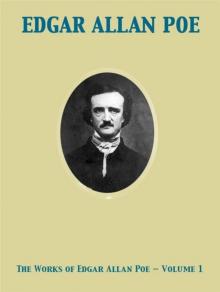 The Works of Edgar Allan Poe — Volume 1
The Works of Edgar Allan Poe — Volume 1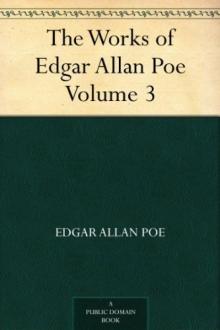 The Works of Edgar Allan Poe — Volume 3
The Works of Edgar Allan Poe — Volume 3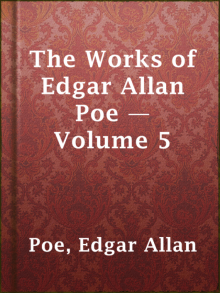 The Works of Edgar Allan Poe — Volume 5
The Works of Edgar Allan Poe — Volume 5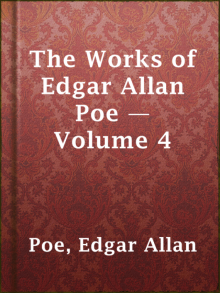 The Works of Edgar Allan Poe — Volume 4
The Works of Edgar Allan Poe — Volume 4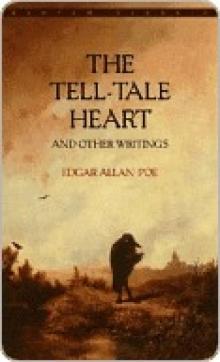 The Tell-Tale Heart
The Tell-Tale Heart The Raven (Penguin)
The Raven (Penguin)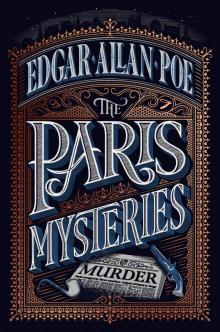 The Paris Mysteries
The Paris Mysteries Tales of Terror from Edgar Allan Poe
Tales of Terror from Edgar Allan Poe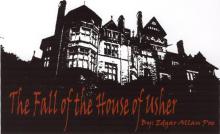 The Fall of the House of Usher
The Fall of the House of Usher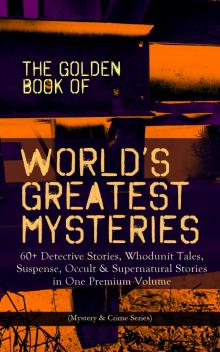 The Golden Book of World's Greatest Mysteries
The Golden Book of World's Greatest Mysteries The Narrative of Arthur Gordon Pym of Nantucket
The Narrative of Arthur Gordon Pym of Nantucket Ligeia
Ligeia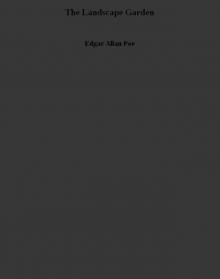 The Landscape Garden
The Landscape Garden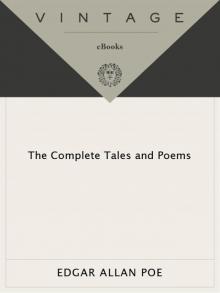 Complete Tales & Poems
Complete Tales & Poems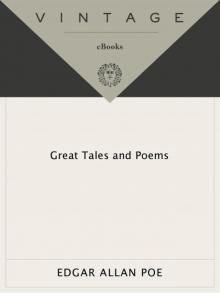 Great Tales and Poems of Edgar Allan Poe
Great Tales and Poems of Edgar Allan Poe The Colloquy of Monos and Una
The Colloquy of Monos and Una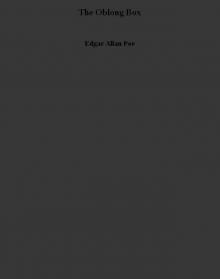 The Oblong Box
The Oblong Box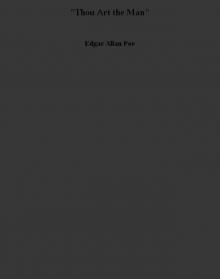 Thou Art the Man
Thou Art the Man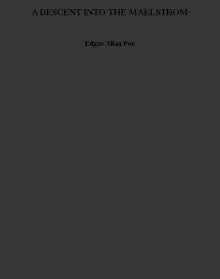 A DESCENT INTO THE MAELSTROM
A DESCENT INTO THE MAELSTROM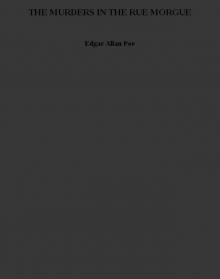 THE MURDERS IN THE RUE MORGUE
THE MURDERS IN THE RUE MORGUE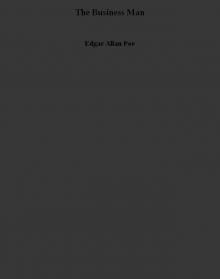 The Business Man
The Business Man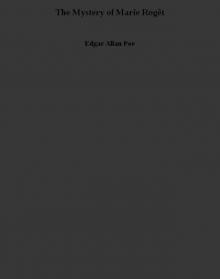 The Mystery of Marie Rogêt
The Mystery of Marie Rogêt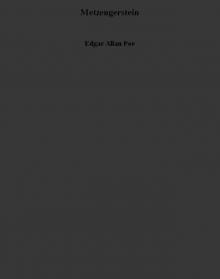 Metzengerstein
Metzengerstein The Man That Was Used Up
The Man That Was Used Up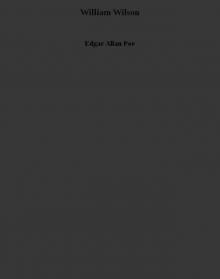 William Wilson
William Wilson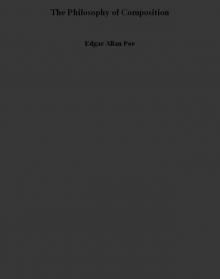 The Philosophy of Composition
The Philosophy of Composition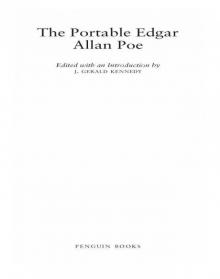 The Portable Edgar Allan Poe
The Portable Edgar Allan Poe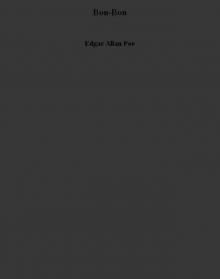 Bon-Bon
Bon-Bon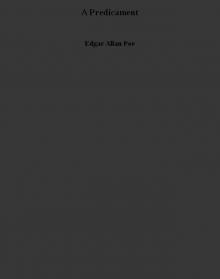 A Predicament
A Predicament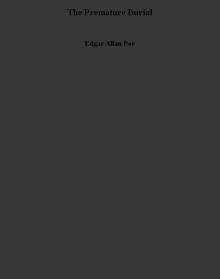 The Premature Burial
The Premature Burial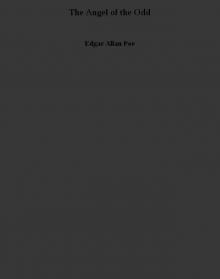 The Angel of the Odd
The Angel of the Odd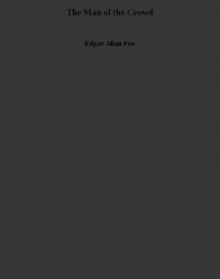 The Man of the Crowd
The Man of the Crowd Never Bet the Devil Your Head
Never Bet the Devil Your Head The Tell-Tale Heart and Other Writings
The Tell-Tale Heart and Other Writings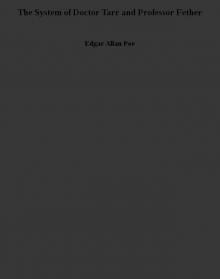 The System of Doctor Tarr and Professor Fether
The System of Doctor Tarr and Professor Fether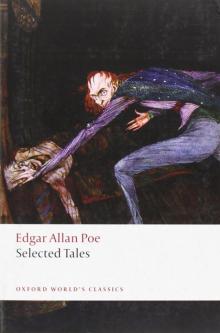 Selected Tales (Oxford World's Classics)
Selected Tales (Oxford World's Classics)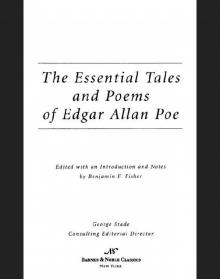 Essential Tales and Poems of Edgar Allan Poe (Barnes & Noble Classics Series)
Essential Tales and Poems of Edgar Allan Poe (Barnes & Noble Classics Series) MS. Found in a Bottle
MS. Found in a Bottle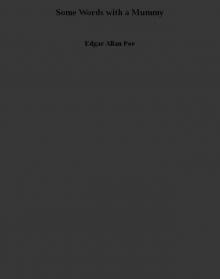 Some Words with a Mummy
Some Words with a Mummy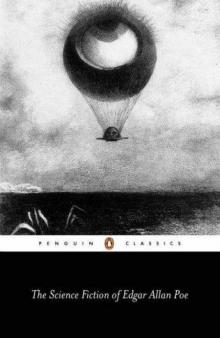 The Science Fiction of Edgar Allan Poe (Penguin Classics)
The Science Fiction of Edgar Allan Poe (Penguin Classics) King Pest
King Pest CRITICISM
CRITICISM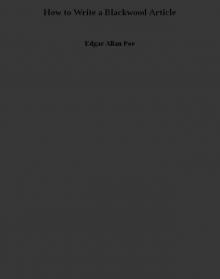 How to Write a Blackwood Article
How to Write a Blackwood Article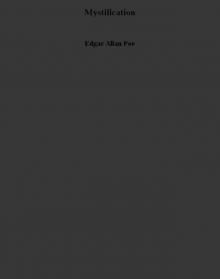 Mystification
Mystification Diddling Considered as One of the Exact Sciences
Diddling Considered as One of the Exact Sciences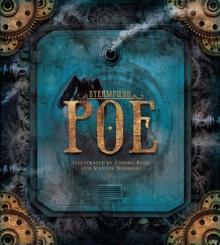 Steampunk Poe
Steampunk Poe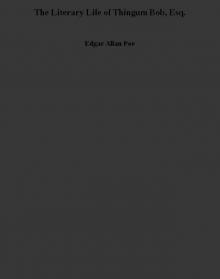 The Literary Life of Thingum Bob, Esq.
The Literary Life of Thingum Bob, Esq.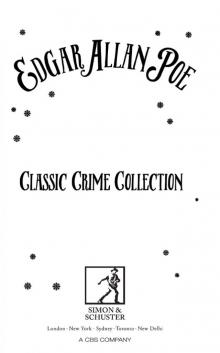 Classic Crime Collection
Classic Crime Collection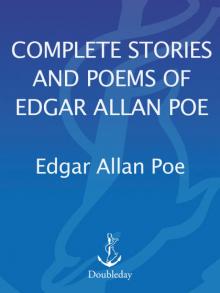 Complete Stories and Poems of Edgar Allen Poe
Complete Stories and Poems of Edgar Allen Poe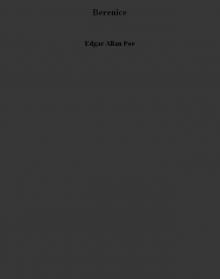 Berenice
Berenice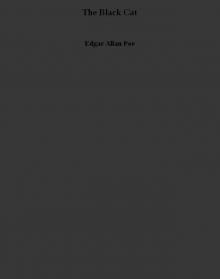 The Black Cat
The Black Cat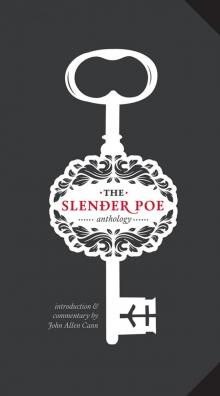 The Slender Poe Anthology
The Slender Poe Anthology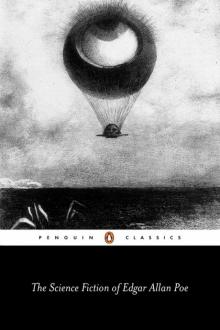 The Science Fiction of Edgar Allan Poe
The Science Fiction of Edgar Allan Poe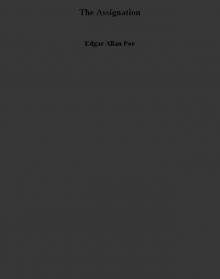 The Assignation
The Assignation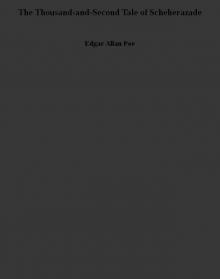 The Thousand-and-Second Tale of Scheherazade
The Thousand-and-Second Tale of Scheherazade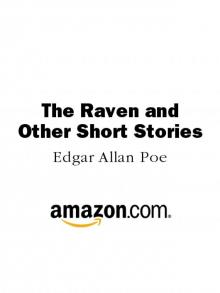 The Raven and Other Short Stories
The Raven and Other Short Stories The Spectacles
The Spectacles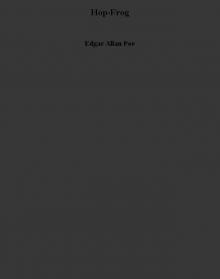 Hop-Frog
Hop-Frog The Purloined Letter
The Purloined Letter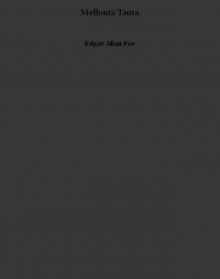 Mellonta Tauta
Mellonta Tauta The Balloon-Hoax
The Balloon-Hoax Landor's Cottage
Landor's Cottage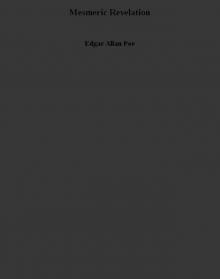 Mesmeric Revelation
Mesmeric Revelation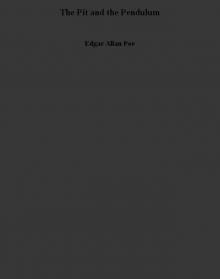 The Pit and the Pendulum
The Pit and the Pendulum